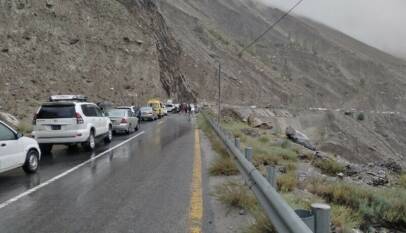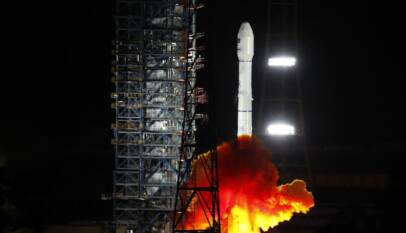China may widen and deepen Suez Canal on the pattern of CPEC: Shahid Javed Burki
Shahid Javed Burki, an analyst writes that during the 21st Century, the Chinese decided to focus on the development of land-based commerce as a way of connecting with the world through its Western borders as they were concerned about disruptions in the narrow Strait of Malacca. They wanted to protect themselves from these disruptions and cut down on the costs. Using the land route that would connect the Pakistani port of Gwadar to the western parts of China was a quicker and cheaper way of moving goods and commodities in and out of China, and so they started developing CPEC. The emphasis, in other words, was on connectivity with China. However, the CPEC, with a focus on linking Gwadar with points in the Autonomous Region of Xinjiang, has not reduced the country’s dependence on the Suez Canal, as China is also developing the ancient port of Trieste on Italy’s Adriatic coast. It is not inconceivable that as the CPEC continues to expand in scope, the Chinese may invest in improving the Suez passageway by deepening and widening it.
The world became smaller and “flatter” as a result of the instantaneous flow of information across international frontiers. There was also easing of constraints on the flow of goods and commodities among nations. Even the movement of people became easier with the result that there was a pronounced change in the proportion of people of foreign origin in populations of developed countries. Most of these developments occurred in the 1980s and 1990s and, together, they were given the name of globalisation. Most experts saw these changes in a positive light. These freer movements had two profound consequences: they changed the way products were produced and also the way commerce was organised and conducted. Looking at the cost of producing things, firms split their operations, taking some parts to the places where they could manufacture cheaply.
The result was the development of global supply chains that were networked to produce final products. Apple became the most cited example of the working of these “split” production lines. The design for the firm’s products were made in its headquarters near Seattle in the United States but most of the manufacturing was done in south China. There, a huge Taiwanese-owned company assembled parts and components made in and imported from a number of countries, mostly in East Asia. The final product assembled was flown or shipped to the points of consumption mostly in North America and Western Europe.
There were other examples. I remember reading what the news magazine, The Economist, called the “story of a man’s shirt.” These items of male dress were designed by fashion boutiques in Europe and the US and were made from the fabric turned out by factories in Bangladesh. Since Bangladesh did not grow cotton, the fabric was made from the yarn spun in India or Pakistan. Cutting and sowing was done by shirt manufacturers in China. The shirts, once made, were sent to Hong Kong to be packaged and shipped to the US and Europe.
The way the retailers operated also changed; big retail stores found it expensive to build and operate large warehouses; they began to rely on what came to be called the “just in time system of production and sale.” It was more efficient and cheaper to bring in products as they were made rather than store them in expensive space in anticipation of the demand for them. Globalisation delivered until the time it couldn’t. As a reviewer writing for The New York Times put it, “yet, as in everything in life, overdoing a good thing can bring danger.” The most glaring example of failure came in late March when, The Evergreen, a giant container ship, the size of four football fields, got stuck in the Suez Canal, stranding a hundred ships on both ends of the world’s most important passageway. According to Bloomberg, the loss in the value of goods held each day was estimated at $9.6 billon. This became a cause of a major disruption in international business. One-tenth of the world’s trade is shipped through the Suez.
Experts from several sea-faring nations went to Egypt to help that country to find ways to release the ship and open the canal for traffic. Dozens of dredgers and tugboats went to work by the side of the ship. The operation was delicate since there was some fear that the ship could break in two halves. There was talk of bringing in helicopters to lift the heavy containers and making the ship lighter. The ship was stuck for a week and was finally freed on March 29.
The increasing size of the container ships is one more indication of the impact of the sharp increase in world trade. According to Allianz Global Corporate and Specialty, a consulting company, there has been an exponential increase in the number of containers loaded on a ship. This has increased 1,500% over the past half-century and has doubled over the last decade. This dependence on one form of transport got disrupted as a result of the coronavirus pandemic. Demands increased enormously for the products manufactured in East Asia and in need by the home-bound workers in West. The need for exercise and office equipment, for instance, increased as a significant proportion of the workforce stayed home. Changes in the structure of global demand for goods and worker-shortages were already having an impact on shipping. Three-fourths of all container ships travelling from Asia to Europe arrived late in February, according to Sea-Intelligence, a research company in Copenhagen. Even a few days of disruption in the Suez Canal could exacerbate that situation.
That was not the only unforeseen consequence of the impact of the pandemic on global commerce. Workers needed to unload container ships were restricted from going to the shipping docks. According to Ian Goldin, professor of globalisation at Oxford University, “as we become more interdependent, we are even more subject to fragilities that arise, and they are always unpredictable. No one could predict a ship going aground in the middle of the canal, just like no one predicted where the pandemic would come from. Just like we cannot predict the next cyber-attack, or the next financial crisis, but we know it’s going to happen.” Likewise, nobody could predict some of the political consequences of globalisation. The working population made redundant by the relocation of production facilities from America to China and other countries in East Asia produced anger that led to the political rise of Donald Trump. Exploiting this anger, Trump went on to become America’s 45th president.
When in the early 21st century, the Chinese decided to focus on the development of land-based commerce as a way of connecting with the world to the west of its borders, they, of course, did not have the Suez Canal kind of accident in mind. They were more concerned about two aspects of the continued reliance on sea for commerce. One was the possibility of disruption caused in the narrow Strait of Malacca through which ships plying between China and European destinations passed. This was a vulnerability against which they wished to protect themselves. The other was the cost. Using the land route that would connect the Pakistani port of Gwadar to the western parts of China was a quicker and cheaper way of moving goods and commodities in and out of China.
It is interesting that when China offered a multibillion-dollar investment programme to develop Pakistan’s physical infrastructure, they didn’t call it the China-Pakistan Development Cooperation. The name chosen was China-Pakistan Economic Corridor (CPEC). The emphasis, in other words, was on connectivity with China. However, the CPEC, with focus on linking Gwadar with points in the Autonomous Region of Xinjiang, did not reduce the dependence on the Suez Canal. On the other side of Gwadar, China began to focus on developing the ancient port of Trieste on Italy’s Adriatic coast. It is not inconceivable that as the CPEC continues to expand in scope, the Chinese may invest in improving the Suez passageway by deepening and widening it. They have the technology and finance to execute such a project.
China-Pakistan strategic dialogue’s 5th round strengthens ‘All-Weather Friendship,’ expert says
KARACHI: China and Pakistan are redefining their ties. The consideration at the highest po…











